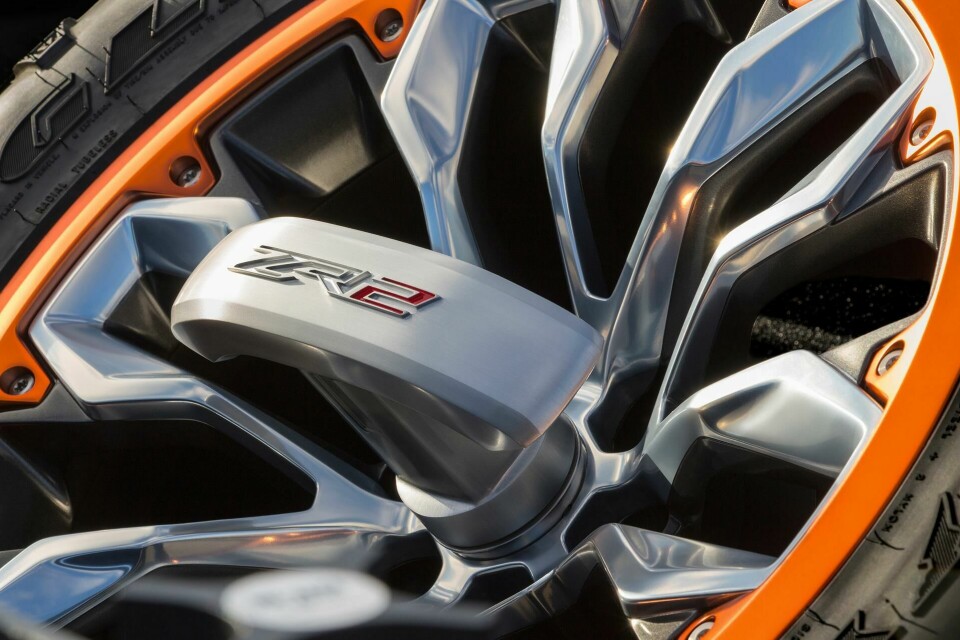
Designer Interview: Ken Parkinson, GM China
“A well-defined process is critical, because the very definition of what the car will be in the future is a wide-open question now”
The love of art and the love of cars got me started down the path to automotive design. As a boy, I loved to draw – horses, initially, but horses soon evolved into horsepower as I watched older friends in my neighbourhood who had these great ‘60s-era cars that they were always working on. Seeing those old Impalas, Camaros and Javelins cruising around, I fell in love with cars and drawing them.
It took me a while to figure out that there was such a thing as a car designer. I grew up in Utah, which is a long way from Detroit or the car culture of California, though I was fortunate to attend school at Brigham Young University, which had an automotive design programme at the time. Alongside my career at General Motors, my personal design philosophy has developed. It is strongly rooted in beauty and emotion. As I look around at everything that man makes, beauty is so powerful and so compelling, whether it is architecture or a mobile phone or an automobile. But what is also essential is execution: the outcome or product must be designed and put together so very well. You have to have a strong fundamental understanding of what you are trying to accomplish, and then to execute it extremely well. Details and exacting craftsmanship are essential to bring a vision to life.
Bringing a vision to life involves a well-defined design process. It begins with understanding what we are designing and for whom – the customer, their lifestyle, their particular wants and needs. Then it moves into an open-ended idea phase with lots of sketching, exploration of different ideas, looking for concepts that have a strong personality and emotional appeal. These explorations start as two-dimensional studies, and then move into three dimensions, where we analyse the ideas and ask, ‘does it maintain its emotional power? Does the theme progress and develop, or does it die on the vine?’ For the successful ideas, maintaining the passion and emotional power of the initial sketch is critical as it moves through every phase, and every review, as it is gradually translated into a production model.
A well-defined process is critical, because the very definition of what the car will be in the future is a wide-open question now. There are so many areas that are new to us: design, packaging, business and ownership models, traffic and road use, and legislation. Autonomy, and electric vehicles and the opportunities they present for different architecture and packaging, will be tremendous design challenges.
In addition, [chairman and CEO] Mary Barra’s vision for GM – zero congestion, zero emissions and zero collisions – brings all sorts of opportunities for design and engineering, and there is a lot going on in working to accomplish this goal. China will have a tremendous influence on this effort – the sheer size of the market, the number of buyers now and in the future, and its government mandate for electrification, will help GM accomplish our future vision and influence the industry as a whole.
Although we envisage designing standardised models for world markets, for the time being at least, there are different things happening in different parts of the world. The overall trend is away from ICE powertrains, but the transition will happen at different times in different markets. These new vehicles need a new kind of designer: one grounded in the traditional skills – drawing, ideation, computer and physical modelling – but who also has a new holistic focus. In the past, designers tended to focus on exterior, interiors, or colour and trim. But today, and increasingly in the coming years, with the advent of autonomy and these new architectures that emerge from the opportunities afforded by electric power, we need designers who can see new design solutions, who are freed from old conceptions.
We need designers who can focus on the entire vehicle and the environment within that vehicle, both the look and the experience it provides. These ideas are expressed in the design of the car, from the exterior through to the smallest colour and trim decision. Dealing with increasing technology in the cabin, with the increasing presence of, and interaction with, screens, requires designers who are conversant with these technologies and who can give us options to make the vehicle experience as good as it can be. Despite the varying markets in the world, design skillsets are, and will continue to be, largely universal, whether for Detroit, China, Korea, or other places. Creativity, a passion for the work, and the ability to create an image or expression of an idea that can motivate a team and keep a project moving forward are skills needed everywhere.

The designer of today and tomorrow should embrace different work assignments as well. Although there is much to learn at the large HQ home studios, like those at the GM Tech Center in Warren, Michigan, sometimes ‘leaving home’ and going offsite or overseas can be critical experiences in advancing your career. I remember these opportunities, like when I worked offsite on a fast-track programme to design the first GMC Denali, when I was given a lot of responsibility and I had to rely on myself and a small team to get a lot done in a short amount of time. It was at those times, when the learning curve was steep and the timetable very short, that I grew most as a designer. For over ten years of my career now, I have worked in Asia, and witnessed first-hand this rapidly evolving market. That experience has been invaluable.
The car of tomorrow remains a sort of undiscovered country for all of us. We need designers who are open minded and adventurous, for the next decade will see the most rapid changes ever in the history of the car. It is an unbelievably exciting time, and I am looking forward to working with my colleagues to achieve a new vision.
.















